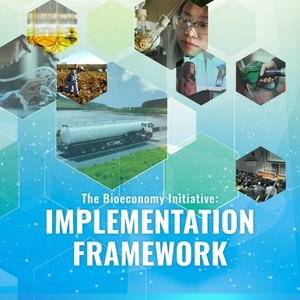Federal agencies release framework for advancing the bioeconomy

SOURCE: USDA
March 6, 2019
BY USDA
The federal Biomass Research and Development (BR&D) Board unveiled a multi-agency strategy March 5 to accelerate innovative technologies that harness the nation’s biomass resources for affordable biofuels, bioproducts, and biopower. The Bioeconomy Initiative: Implementation Framework was developed by the B&RD Board—an interagency collaborative which is co-chaired by the U.S. Department of Agriculture and the U.S. Department of Energy—to guide such efforts.
“The emerging bioeconomy presents an opportunity to expand and enable new agriculture and forest markets while also improving the sustainability of the broader modern economy and environment,” said USDA Deputy Under Secretary for Research, Education, and Economics Scott Hutchins. “Strategic federal investments are developing technologies for the bioeconomy that promise to create new possibilities for renewable product supply-chains, jobs, and economic opportunities.”
“A major benefit of the Bioeconomy Initiative is the ability to maximize the impact of federal investments in bioenergy and accelerate innovation in the bioeconomy,” said Energy Department Assistant Secretary for Energy Efficiency and Renewable Energy Daniel Simmons. “Biobased technologies can provide diverse, affordable, domestic supplies of energy and other products, providing consumers and businesses with additional reliable and secure energy options.”
The Bioeconomy Initiative: Implementation Framework outlines an approach for implementing the Initiative. The Framework will serve as a guiding document for the BR&D Board member agencies to increase government accountability and accelerate innovative and sustainable technologies that contribute to a secure, reliable, affordable, and enduring supply of U.S. energy and products.
The Framework presents goals and actions for addressing knowledge and technology gaps in:
Advertisement
Advertisement
- Advanced algae systems
- Feedstock genetic improvement, production, management, and logistics
- Biomass conversion and carbon utilization
- Transportation, distribution infrastructure, and end use
Advertisement
Advertisement
- Bioeconomy analysis
- Bioeconomy sustainability.
The Implementation Framework lays out activities to address technology uncertainty; leverage government, academic, and industrial resources and capabilities; stimulate public-private partnerships; and generate technical information that can inform decision-makers and policymakers.
The BR&D Board includes officials from DOE, USDA, U.S. Department of Transportation, U.S. Department of the Interior, U.S. Department of Defense, U.S. Environmental Protection Agency, National Science Foundation, and the Office of Science and Technology Policy within the Executive Office of the President.
Related Stories
The USDA significantly increased its estimate for 2025-’26 soybean oil use in biofuel production in its latest World Agricultural Supply and Demand Estimates report, released July 11. The outlook for soybean production was revised down.
The U.S. Energy Information Administration maintained its forecast for 2025 and 2026 biodiesel, renewable diesel and sustainable aviation fuel (SAF) production in its latest Short-Term Energy Outlook, released July 8.
XCF Global Inc. on July 10 shared its strategic plan to invest close to $1 billion in developing a network of SAF production facilities, expanding its U.S. footprint, and advancing its international growth strategy.
U.S. fuel ethanol capacity fell slightly in April, while biodiesel and renewable diesel capacity held steady, according to data released by the U.S. EIA on June 30. Feedstock consumption was down when compared to the previous month.
XCF Global Inc. on July 8 provided a production update on its flagship New Rise Reno facility, underscoring that the plant has successfully produced SAF, renewable diesel, and renewable naphtha during its initial ramp-up.
Upcoming Events










